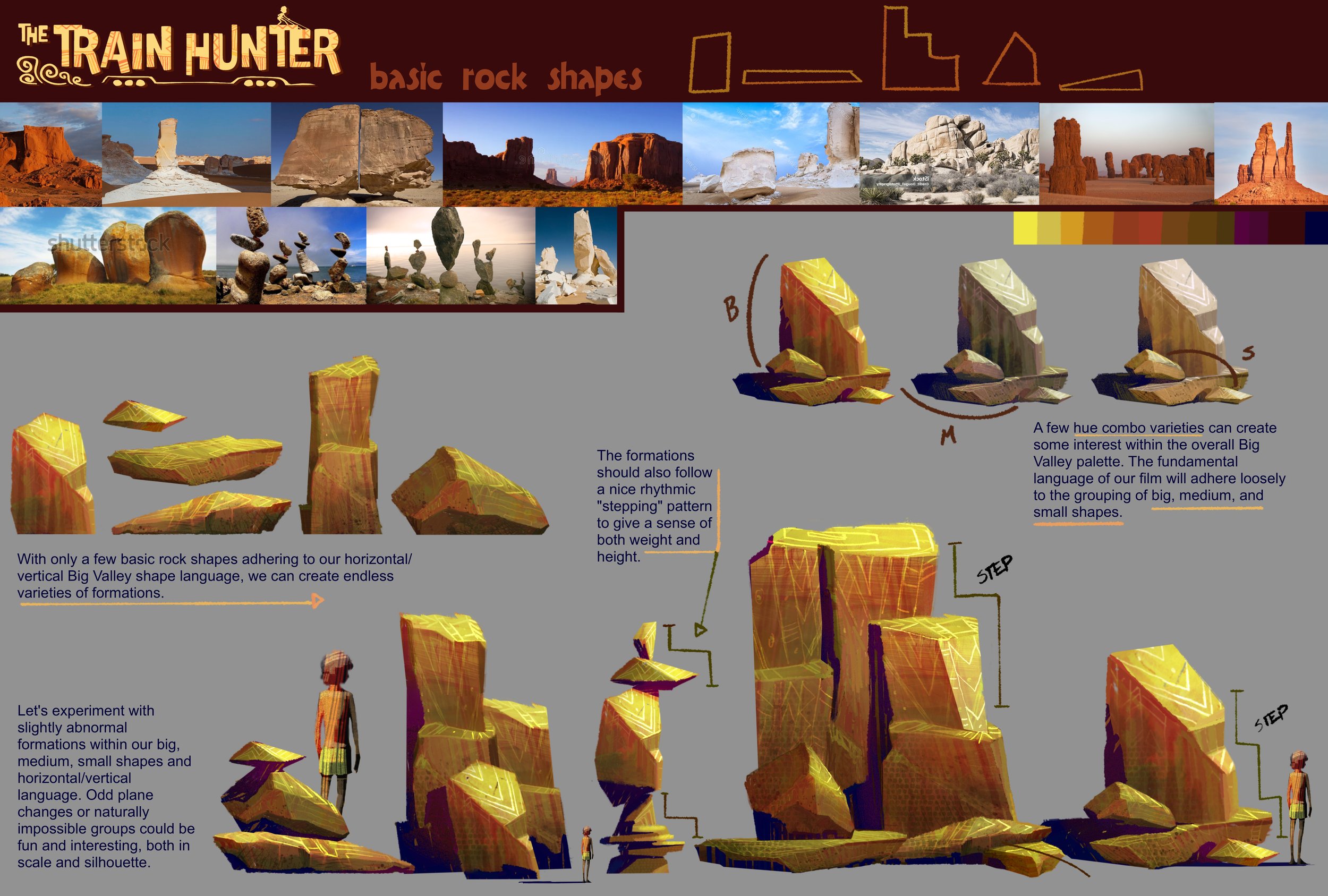
PRODUCTION DESIGNER

Client : Crew 972, 2022 - present
Director: Alex Orrelle
My role: Production Designer
Alex Orrelle and I have worked on several projects together, and this is his short film debut. We have completed a handful of funding stages and are now in the process of producing a full PoC trailer.
For the last year and a half, Alex and have I worked our way toward developing a cohesive language for the film. As these things begin slowly, you will find the artwork from sixteen months ago looks very different than the artwork which has ended up being the visual foundations for our film. I hope you find my process enjoyable, and if you have any questions about the film, please reach out!

FINDING THE HEART OF A STORY
This project is about absurdity, humor, and finding the profound among the ridiculous: a young boy is cast out from his desert tribe and befriends the dangerous wild diesel train in order to survive, and ends up connecting the two worlds to benefit all.
At the beginning of every project is one word: language. As production designer, the questions I ask myself are:
What are the core relationships in the story and how do I describe them visually?
How does the world support the narrative, and in what ways can I design the main environments that might hint at the emotional undercurrents?
How can I use color, form, texture, and shape to connect the characters’ journey with the world that surrounds them?
STYLE AND CINEMATOGRAPHY
This is where all the research comes in. References the director provides and asks for, mood boards, vision boards, sketches, shot development and world development. Once the language is locked in, the stylistic exploration requires a lot of support and narrative justification. Below is a series of frames I created in developing the relationships between style and cinematography, starting quickly and right from the beginning.
Who is the main character and what defines their journey? Why do they do what they do, and what sort of opposition do they face?
Using this knowledge, how does mass, space, framing, light design, and relative scale produce shots which tell our story in the most effective way possible?

ABSTRACTIONS
After getting myself on solid ground in visually constructing the narrative, I have a foundation on which to develop visual differences. Identifying “differences” in a story is the simplest way to start defining and refining style: palette, shape, light, and texture all have relative spaces in which they exist in the narrative. If you define one space, and it alters or changes in the story, everything visually defined in the space also has to change. Successfully identifying these differences also naturally leads you to discover and identify the visual anchors in the story: the things that always, no matter what, remain the same. It is the combination of these specific changes and anchors which helps to develop a style utterly unique to the story, and abstractions are the way I start this process.
I combine anything that feels interesting to get a visceral reaction for one space against another. Offsetting these two worlds allows me to explore certain anchoring aspects of the images: where do I tend to specifically locate texture? How does the light act? Are there similar shapes? To what extent are these two settings different, and what about them can be identified as the same?
STYLE GUIDE
Once I have some concept work that gives me the right feel and mood, I dive into a style guide. It’s the way I organize my thoughts about things like assets, camera, distance, 2D vs 3D, palette, special textures and lighting, etc. It’s where I identify, for myself and for the team, the individual things that make the world unique - right down to the rocks and plants.































